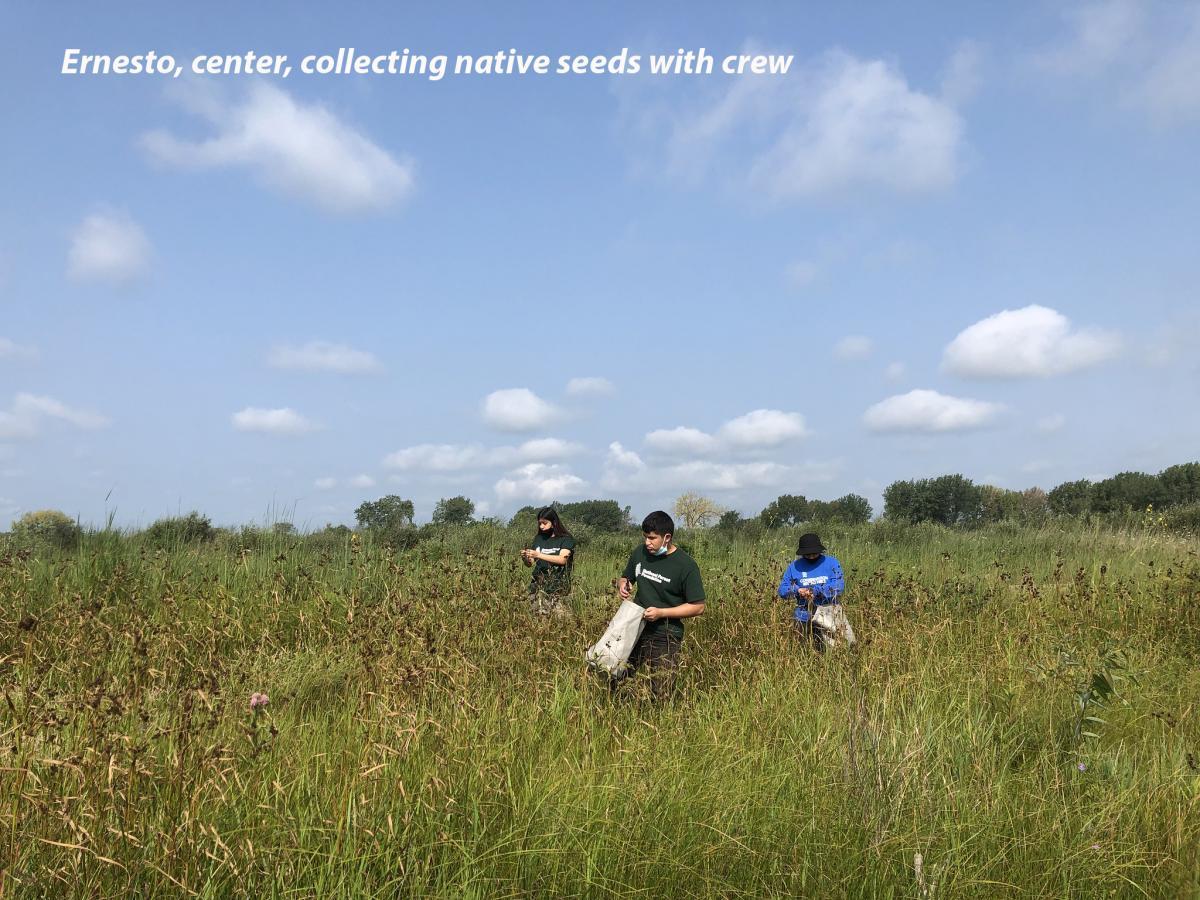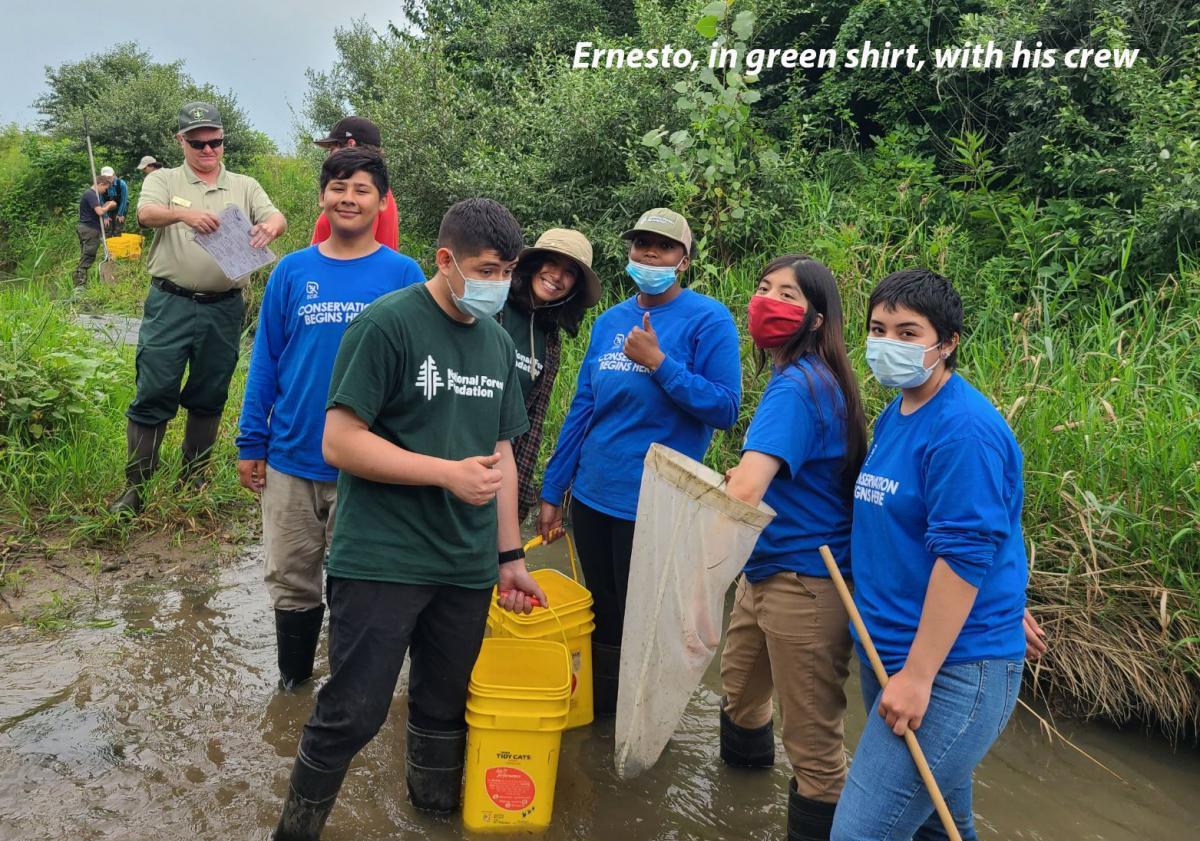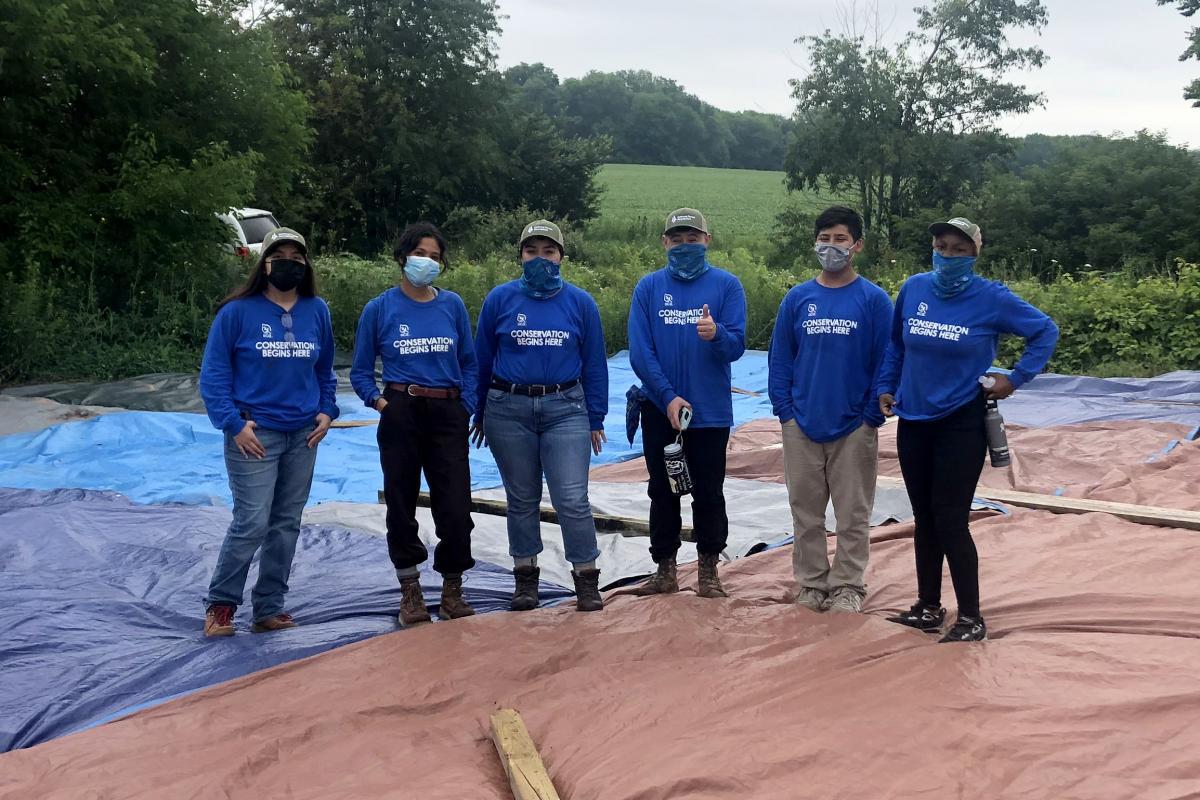By Ernesto Paz
SCA Crew Member
Fifty miles southwest of Chicago, hiding in plain sight, sits a time machine.
Midewin National Tallgrass Prairie is one of the last remaining ecosystems of its kind, offering a glimpse of the landscape that defined the Midwest for centuries, right down to the (reintroduced) bison herd. The name Midewin is an old Native American term for healer and the chill vibe one feels while walking prairie trails accompanied only by the breeze and birdsong is sure to cure virtually anything.
For those who prefer more recent history, the site is also home to hundreds of World War II munitions bunkers. They were known as igloos back when this place was the Joliet Army Ammunition Plant.
Until this summer, I had no idea any of this was here. But then I joined a Student Conservation Association (SCA) crew made up of other local high school kids, and our first project together was clearing weeds and brush from one of the bunkers.
You couldn’t even see its gray concrete walls when we started but after many long days, we completed the project. The “before & after” images of that moment were pretty rewarding and will stick with me for a long time.

I’ve always liked the outdoors, the sense of freedom it provides, and the never-ending opportunities for exploration. I also wanted to learn more about nature and how to keep it healthy. My older brothers did SCA when they were in school, so I thought I’d give it a try. In addition to protecting the environment, SCA’s mission is to build conservation leaders and instill in its participants an ethic of stewardship.
Seeing what my crew and I accomplished and knowing it’s going to benefit other people by giving them a better experience made me feel good. It built my confidence and, working with great people my own age, I learned to communicate better. Before, I was somewhat closed off to people. Suddenly, I felt more secure in expressing my opinion. I thought it mattered. I thought I mattered.
That’s when I realized the Midewin time machine could also go to the future. Or at least shape it.

This summer, I learned that these tallgrasses have extra-long roots that are amazingly effective at storing carbon. Working under a hot sun every day and seeing videos of all those wildfires in California, I began to think more about climate change. Because of this program, I now walk everywhere I can or use public transportation. I pay more attention to the products I use, and buy things that last longer and can be recycled.
My experiences have also opened my mind to the different jobs available in this field and to all the people working to protect nature. As I begin my senior year in high school, I am now thinking about a career in environmental science.
Seeing all that’s been done to restore this prairie over the years gives me hope for the planet. And knowing I was part of that effort fills me with pride.
Past agricultural practices almost wiped out the region’s tallgrass. Now we are replanting and removing invasive species. Those old military structures are also slated to go as part of a plan to return Midewin to its earlier, more sustainable condition.
It’s not exactly going back in time. It’s more like taking action just in time to ensure our best days are still ahead of us.

Ernesto Paz, 17 (and fourth from left above), resides in Chicago and attends Infinity Math Science & Technology High School. His work at Midewin was conducted in partnership with the National Forest Foundation and Friends of the Forest Preserves.